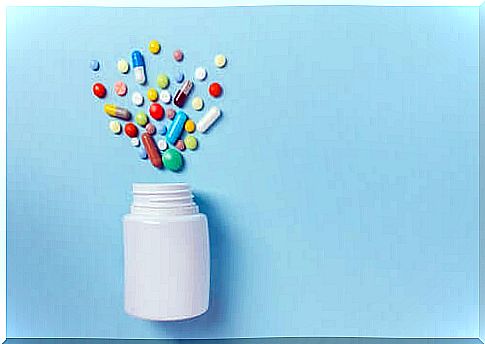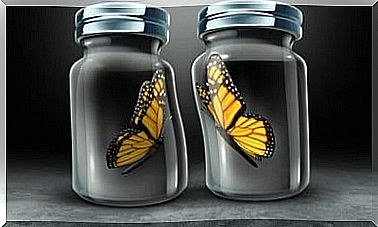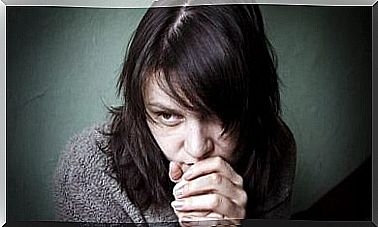Psychiatric Drugs: What Are They And How Do They Work?

Psychiatric drugs are undoubtedly an important tool in psychology and psychiatry. They have helped substantially improve the prognosis of many mental illnesses. However, like all drugs, they are not free from important side effects that need to be evaluated and controlled.
Treatment with psychiatric drugs should not replace psychological therapy. Because? Because these are not competing resources, but complementary. which help address the underlying causes of many ailments.
What are psychiatric drugs?
Psychiatric drugs are medicines used to treat mental illness. They are chemicals that act on the nervous system by modifying cognitive activity and mental and emotional processes.
In the early 1950s, the discovery of chlorpromazine started the revolution in psychopharmacology. Since then, progress in this area has followed one another at a breakneck pace.
Even today, psychopharmacology is an important research field in the attempt to obtain more targeted drugs with fewer side effects.
Mechanism of action of psychiatric drugs?
Although the cause of many mental illnesses is still unknown, it has been shown that they are linked to metabolic alterations, particularly in brain neurotransmitters (NTs).
These chemicals, released in neuronal synapses and acting on specific receptors, are involved in the transmission of nerve impulses. Altering the effects of NTs is the mechanism of action of most psychiatric drugs. The main NTs on which these drugs act are:
- Acetylcholine
- Noradrenaline
- Dopamine
- Serotonin (5-hydroxytryptamine)
- GABA (gamma-aminobutyric acid).
It is generally believed that in states of brain hyperactivity, the release of NT in the synapses increases. However, a decrease in their release and / or density in the synaptic space appears to occur in more depressive states.
But this is not the only explanation. The nervous system is very complex, many factors influence it and it is difficult to know all the mechanisms involved. Therefore, as Silvia Wikinski states, many aspects of mental illness cannot be explained simply through these processes.
Types of psychotropic drugs
Although there are several classifications, psychiatric drugs can be grouped into four main groups :
- Neuroleptics or antipsychotics.
- Anxiolytics and sedative-hypnotics.
- Antidepressants.
- Eutimizers or mood stabilizers.
To these must also be added psychostimulants, antidepressants or psychotropic drugs for the treatment of addiction, among others, but we will focus on the main groups.
1. Neuroleptics or antipsychotics
The main indication of antipsychotics is the treatment of psychoses, such as schizophrenia. It is a rather complex disease, characterized by positive symptoms (delusions and hallucinations) and negative symptoms (apathy, social isolation…). Antipsychotic drugs are classified as follows.
Typical antipsychotics:
- Main mechanism of action: blockade of D2 dopamine receptors of the mesolimbic pathway.
- Main effect: cessation of positive symptoms (but little effect on negative symptoms).
- Important side effects: extrapyramidal symptoms and hyperprolactinemia due to blocking of other dopaminergic pathways.
- Examples: chlorpromazine, haloperidol.
Atypical antipsychotics:
- Main mechanism of action: blockade of dopamine D2 receptors and also of serotonin 5-HT2A receptors.
- Main effect: cessation of positive and negative symptoms, as blocking serotonin prevents the side effects of blocking dopamine.
- Side effects: hypotension, tachycardia, dizziness, sedation, etc.
- Examples: risperidone, quetiapine, olanzapine, clozapine, ziprasidone, etc.

2. Anxiolytics and sedative-hypnotics
Anxiolytics, used in the treatment of anxiety, are the most widely used psychotropic drugs today. Many are also used as sedative-hypnotics for the treatment of insomnia.
Their main mechanism of action is to enhance the agonist action of GABA in GABA-A receptors. This increases the inhibitory effect of this neurotransmitter which regulates neuronal excitation in the nervous system. The different groups of anxiolytics and sedative-hypnotics are:
Barbiturates
- Main effect: sedative
- Used for the treatment of anxiety before the appearance of benzodiazepines.
- They cause a lot of addiction and, in the long run, neurological damage.
Benzodiazepines
- Main effect: anxiolytic, sedative-hypnotic, muscle relaxant and also anticonvulsant.
- Fewer side effects than barbiturates, less addiction and less sedatives. For this reason, benzodiazepines are the most widely used anxiolytics.
- There are benzodiazepines with a later but longer lasting action (diazepam, clonazepam). Others are faster-acting, but their effects last less (lorazepam, alprazolam).
Short-lasting sedative-hypnotics
- Main effect: they act as GABA agonists, but only on receptors related to sleep and hypnotic effects.
- Less anxiolytic, anticonvulsant and muscle relaxant effect of benzodiazepines.
- Example: zolpidem
Buspirone
- Main effect: pure anxiolytic, with almost no hypnotic or tranquilizing effect. It acts only at the level of serotonin, but not at the level of GABA.
- You have to wait longer to notice the effects.
- Useful in the treatment of generalized anxiety disorder
Antidepressants
After anxiolytics, antidepressants are the most prescribed psychotropic drugs today. They are indicated for the treatment of depression, generally characterized by a decrease in NTs in neuronal synapses.
In general, therefore, antidepressant drugs increase the concentration of these substances through different mechanisms of action. There are many types of antidepressants. Here are the three main groups:
MAO
- Mechanism of action: inhibition of the enzyme monoamine oxidase, responsible for eliminating an excess of NT such as serotonin, dopamine or noradrenaline.
- They can be irreversible and non-selective or reversible and selective inhibitors.
- Significant side effects: high risk of hypertension, weight gain.
- They are usually not first-choice drugs.
- Example: isocarboxazid.
Tricyclic antidepressants
- Mechanism of action: inhibition of serotonin and noradrenaline reuptake. Although they also affect other NTs.
- Side effects: antihistamine and anticholinergic effects. For example: dry mouth, blurred vision, constipation.
- They were used extensively for depression until the emergence of SSRIs.
- Examples: imipramine, amitriptyline.
SSRI
- Mechanism of action: selective inhibition of serotonin reuptake. They do not affect other NTs.
- They are the safest antidepressants and have fewer side effects. They usually represent the treatment of choice.
- Examples: sertraline, fluoxetine, citalopram.
Eutimizers or mood stabilizers
These are drugs used in the treatment of mood disorders, such as bipolar disorder, characterized by manic and depressive episodes. There are two groups of mood stabilizing drugs:
Salts of lithium
- The oldest and best known mood stabilizer drug.
- Different mechanisms of action.
- Very narrow therapeutic range. It is therefore necessary to monitor the levels in the blood.
Anticonvulsants
- Mechanism of action: they enhance the inhibitory action of GABA and reduce the excitatory action of glutamic acid.
- For example: valproic, carbamazepine, topiramate.

To conclude, even if the cause of many mental illnesses is still unknown, psychotropic drugs represent a valid tool to substantially improve the prognosis and move towards a cure.
Pharmacology today has reached a high level of development: there are many different psychotropic drugs and it is possible to customize therapies according to the patient.









